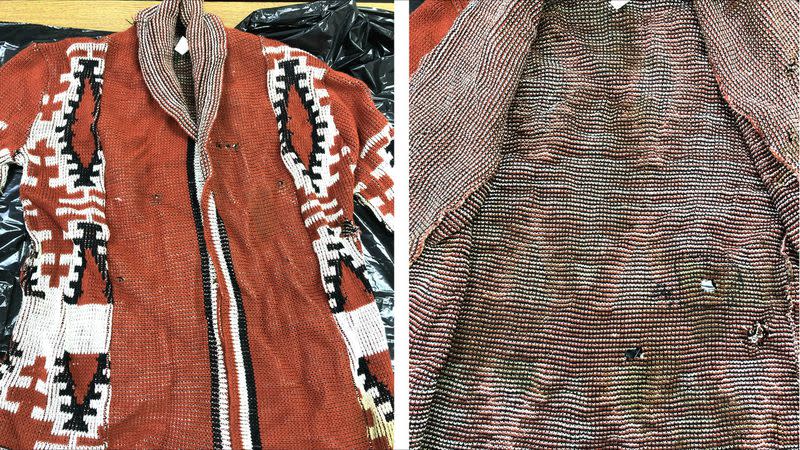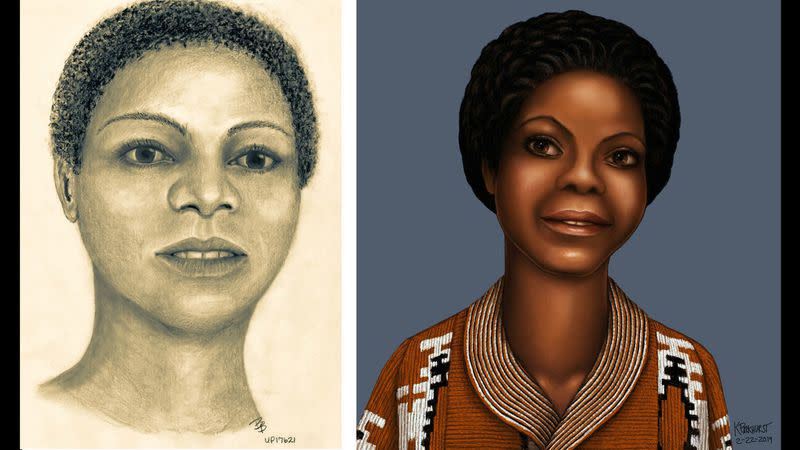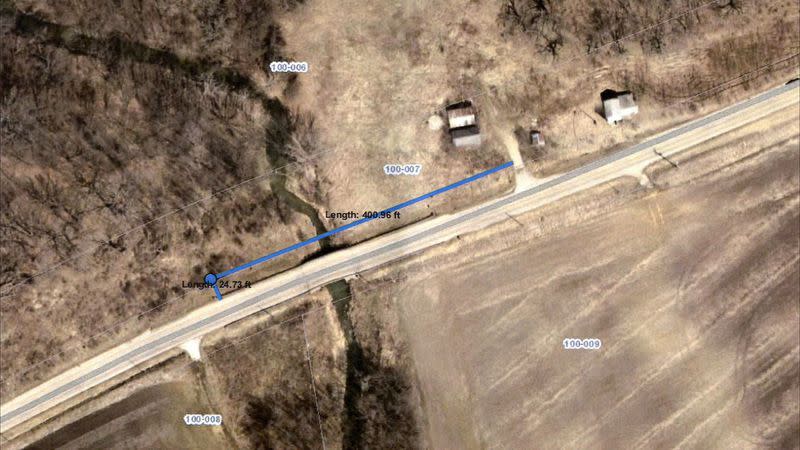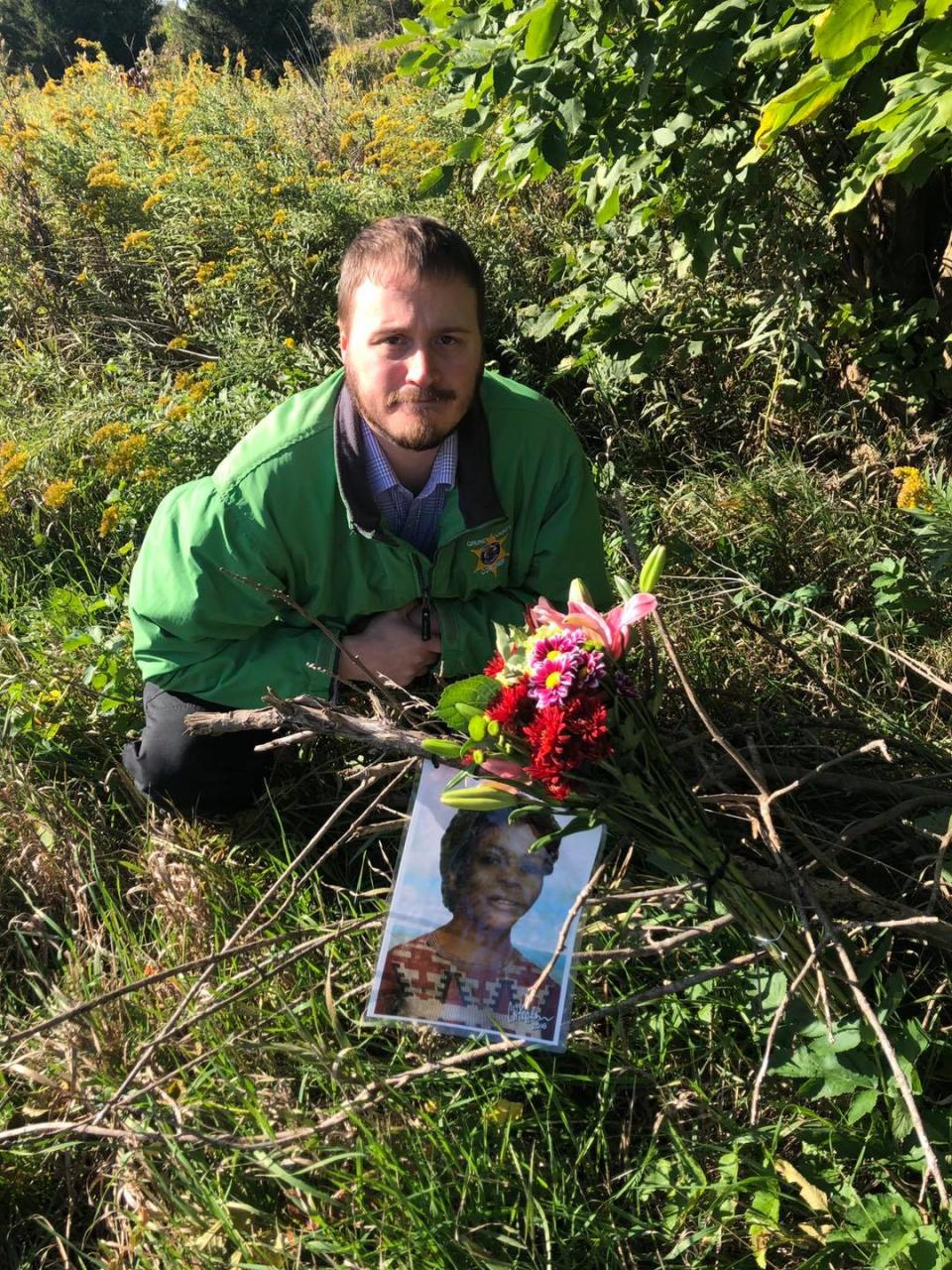Investigative genetic genealogy offers new clues about 'Jane Seneca Doe' 45 years after her murder
For 45 years, the identity of a young woman found murdered and tossed in a ditch along a highway in a rural area near Seneca, Illinois, has been a mystery.
She’s only been known by the name Jane Seneca Doe. But authorities in Grundy County haven’t given up and one dedicated coroner believes he’s getting close to finding out who she was. He was born 15 years after the unidentified woman was murdered, but he has made it his mission to give her back her name.

“I think everybody deserves closure, justice and absolutely they deserve their name,” Grundy County Deputy Chief Coroner Brandon Johnson told Dateline. “For someone to be buried without any of that, especially without their name, that’s just really sad. And to be forgotten for 45 years, that’s just heartbreaking.”
The mystery of Jane Seneca Doe began back in the fall of 1976. Gerald Ford was president of the United States, “Play That Funky Music” topped the Billboard charts, and forensic DNA technology in criminal investigations didn't yet exist.
So when the body of an unidentified Black woman was discovered on October 2, 1976, no one was able to determine who she was. She was buried nameless.
Johnson told Dateline that it was between 3:30 p.m. and 4 p.m. on October 2, when a farmer and his granddaughter were passing through a field and came across the woman’s body in a ditch along Highway 6 in an unincorporated area of Grundy County near Seneca, Illinois. She had died from a single gunshot to the back of her head.
Johnson further explained to Dateline that the victim, who was about 5 feet, 7 inches tall, and weighed about 150 pounds, appeared to have been dumped at the site where she was found. Wrapped around her head was a multi-colored knit red and black and white sweater. In the pocket of the sweater, which may have been a cardigan, was a bottle of TJ Swann wine.

Johnson told Dateline that investigators at the time did all they could, but were unable to identify the woman. After nearly two months of unsuccessful attempts to do so, she was buried in an unmarked grave at the Braceville-Gardner Cemetery in Braceville, Illinois, where she remained until 2018.
Time passed, her case grew cold. Johnson told Dateline that multiple artists’ renderings have been released to the public over the years with the hope someone would recognize her. To this day, the woman remains nameless.
But Johnson is hoping to change that.
In June of 2018, after exhausting all leads, Johnson partnered with the DNA Doe Project, an organization that utilizes genetic genealogy to assist in identifying the unidentified.
“We've solved cases based on third cousins, or even more distant,” DNA Doe co-founder Colleen Fitzpatrick told NBC 5 in 2019. “It's a whole network of relatives that you try to piece together, and find how they connect, and then, how they connect to your John and Jane Doe.”

Johnson told Dateline that he often thinks back to one of the most infamous of the cold cases solved through genetic geology -- that of the accused Golden State Killer, suspected of a raping and killing spree over a 12-year span beginning in 1974.
“We have hope and that’s why we haven’t given up,” he said.
Investigators had Jane Seneca Doe’s body exhumed and between May and August of 2019, DNA was extracted, sequenced and bioinformatics, which analyzes and interprets biological data, were completed.
On September 16, 2019, her DNA file was uploaded to GEDmatch and the genealogical research began.
Johnson told Dateline that the use of investigative genetic genealogy to identify John and Jane Does is a powerful tool. But added that some cases can be solved quickly and others take longer. He said there are challenges like low DNA matches, lack of records, misattributed parentage and broken families.
But they soon began to make headway. And this month, as the 45th anniversary of the murder approaches, more clues have been revealed about Jane Seneca Doe’s past.
Johnson told Dateline that a woman whose DNA provided at least a partial match to his Jane Doe had purchased an Ancestry.com DNA kit, and uploaded her profile to an online database. But the family tree was extensive and complicated.

“In our Jane Doe’s case, her family tree is very large and complicated,” Johnson said, adding that she may have had siblings who were unaware of her existence. “We’ve discovered the highest DNA match is a close relative on her father’s side. But unfortunately, he has little knowledge about the family.”
According to the most recent report that Johnson released, the genealogy suggests that Jane Doe’s grandparents or possibly great-grandparents had a very large family and raised them primarily in Dallas County, Alabama. They may have also lived in Wilcox County, Alabama.
Some family members stayed in Alabama, while others moved to Cincinnati, Ohio and Detroit, Michigan. He said it’s also possible that Jane Doe’s parents might have lived in Selma, Alabama. The surnames Calhoun and Harris are prominent in Jane Doe’s family tree.
“I’ve always wondered how she could vanish without anybody missing her,” Johnson said. “But now knowing how complicated her family tree is, it makes a little more sense. The family dynamics were all over the place. There's a good chance that a lot of her family members never knew about her."
After getting results of the woman’s family in Selma, Johnson sent information to churches in the area, hoping someone would recognize a name from the family tree. Johnson doesn’t have a name for his murder victim yet, but said he believes he’s close.
Due to the extensive family tree, the Grundy County Coroner’s Office and the DNA Doe Project continue to request the public’s assistance in helping to finally identify Jane Seneca Doe.
In 2019, an artist-rendered image by Carl Koppelman, of how the victim may have appeared in life was released to the public.
“All we ask is that you take a look at the photos and read the information,” he said. “Maybe she’s someone you went to school with. Maybe you stood next to her at a bus stop. Maybe she was a neighbor.”

Last month, authorities in Jackson County, Mississippi, identified skeletal remains – still then known only as “Escatawpa Jane Doe” – found nearly 44 years ago at a Mississippi construction site as Clara Birdlong, a woman they believe was a victim of the late Samuel Little, the most prolific killer in U.S. history.
Johnson told Dateline that news sparked hope that his Jane Doe could also be connected to the serial killer, which might have helped lead to her identification. But Johnson said investigators confirmed they were not linked and it is believed that she was not one of his victims.
Of course, even after the true identity of “Jane Seneca Doe” is revealed, investigators face another mystery. Who killed her? Johnson told Dateline that while he would like to see justice for Jane Doe with the arrest of her killer, that’s not his focus.
"I’d like to give her name back," he said. "It’s what she deserves. She doesn’t deserve to be forgotten or buried nameless. It’s time we give her back her name.”
If you recognize this woman, or have any information that could help lead to the identity of Jane Seneca Doe, please contact Deputy Chief Coroner Brandon Johnson of the Grundy County Coroner’s Office at 815-941-3359 or email bjohnson@grundyco.org. To follow the case, visit the Facebook page: www.facebook.com/grundycountycoldcase/

